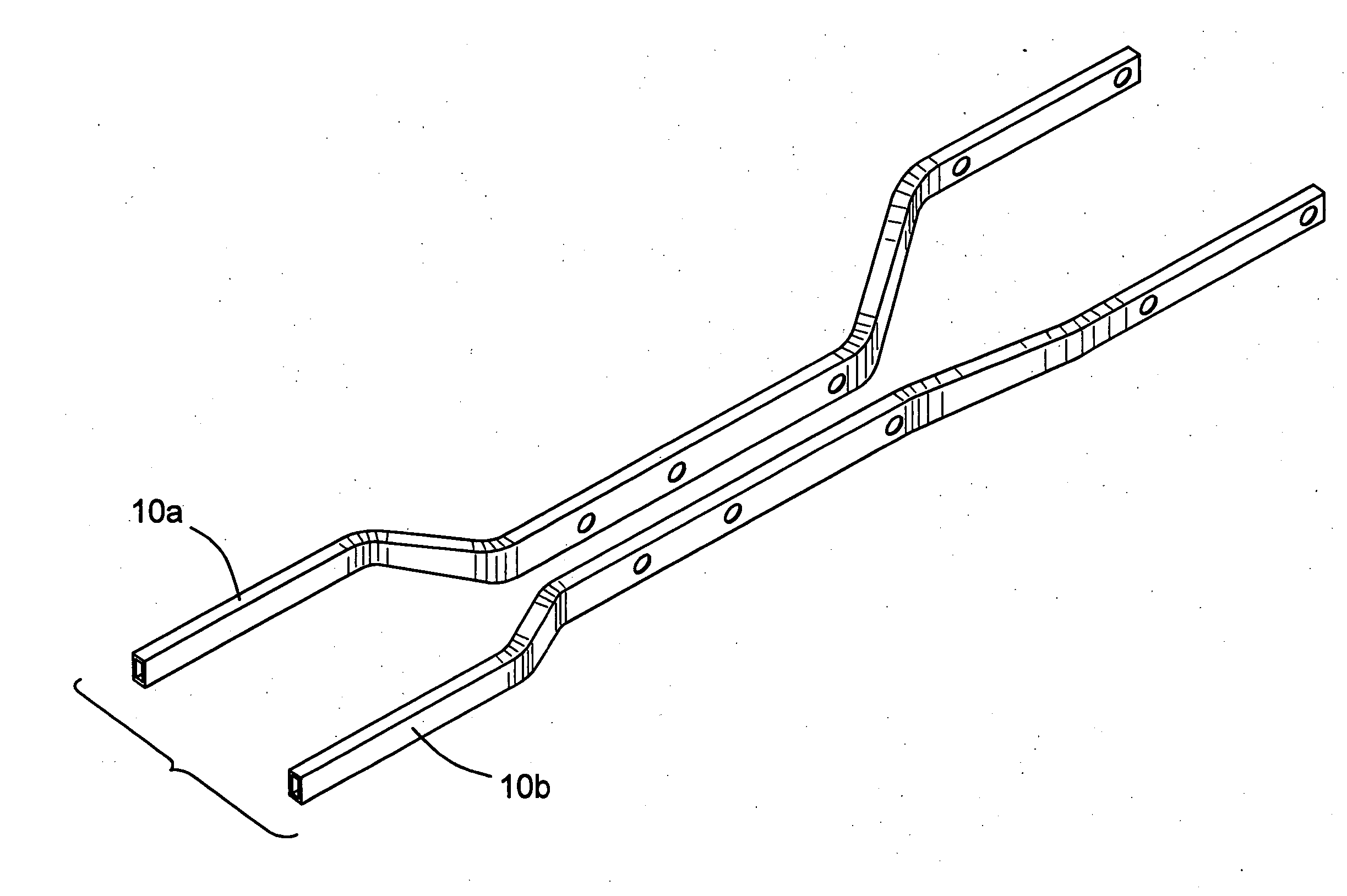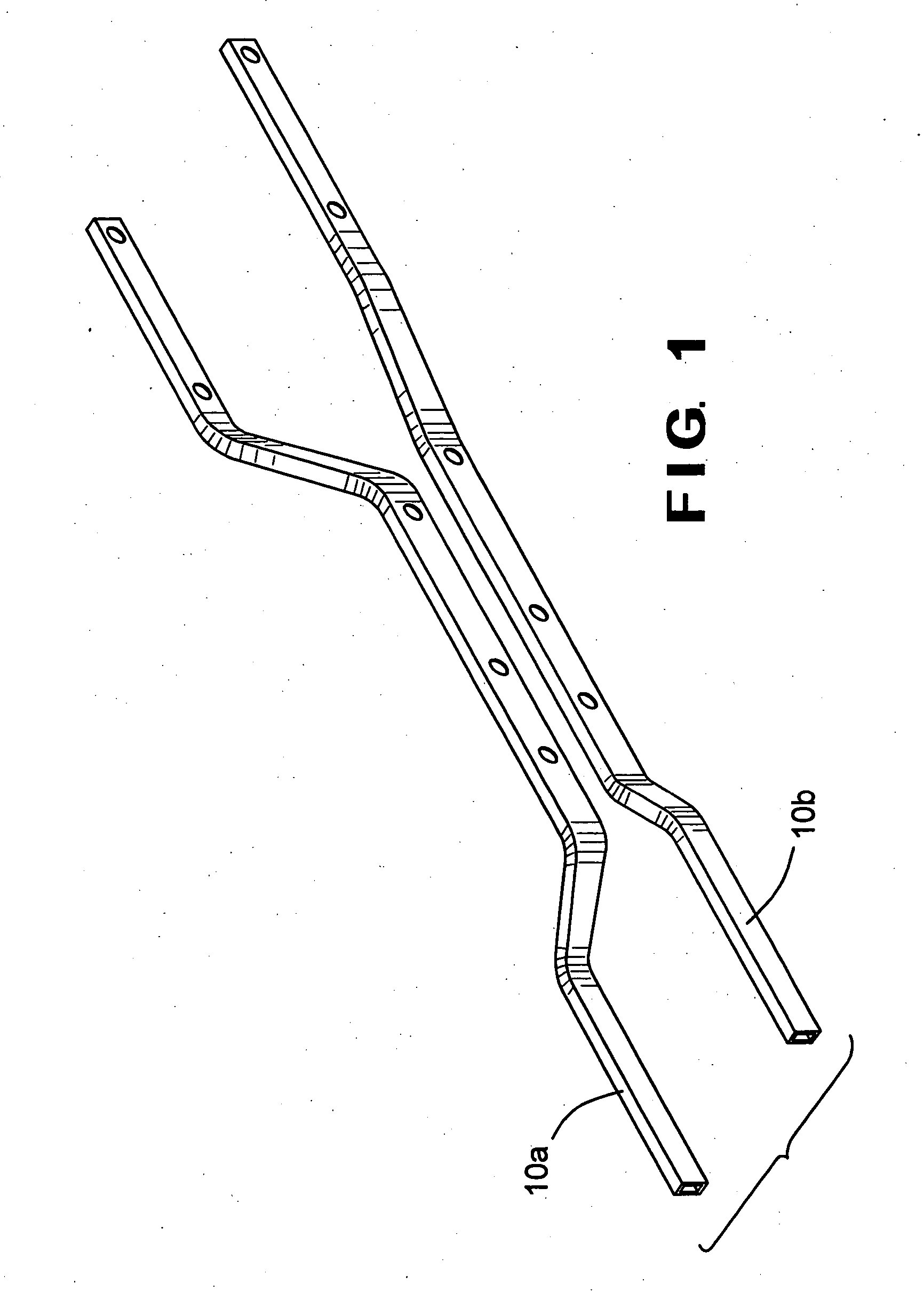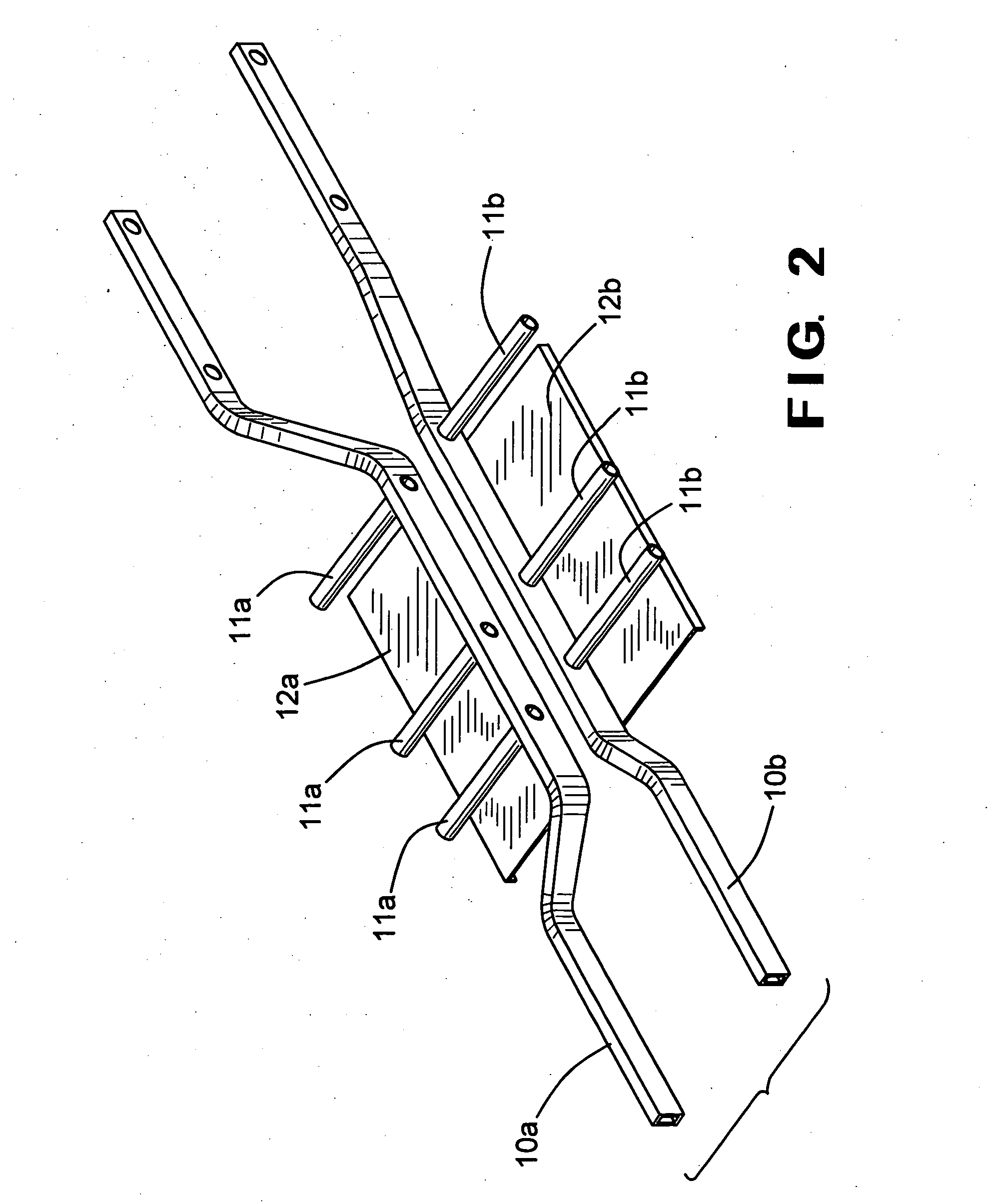Method of manufacturing a frame assembly
a frame assembly and manufacturing method technology, applied in the direction of vehicle components, superstructure subunits, monocoque constructions, etc., can solve the problems of large number of discrete structural components, unfavorable conditions, and long set-up time, so as to facilitate the manufacture of fast-to-market, cost-effective, and without compromising styling and performan
- Summary
- Abstract
- Description
- Claims
- Application Information
AI Technical Summary
Benefits of technology
Problems solved by technology
Method used
Image
Examples
Embodiment Construction
[0025] Referring now to the drawings, there is illustrated in FIGS. 1 through 5 a method of manufacturing an underbody assembly for use in a vehicle or other frame assembly in accordance with this invention. In a first step of the method illustrated in FIG. 1, first and second longitudinally extending beams 10a and 10b are provided. The first and second longitudinal beams 10a and 10b can be formed from any desired material or combination of materials and may have any desired shape or shapes, including different shapes than as shown. Each of the illustrated first and second longitudinal beams 10a and 10b is formed from a single, closed channel structural member. However, either or both of the first and second longitudinal beams 10a and 10b can be formed from an assembly of multiple pieces. Furthermore, either or both of the first and second longitudinal beams 10a and 10b can be formed either partially or completely from open channel structural members. In the illustrated embodiment, ...
PUM
 Login to View More
Login to View More Abstract
Description
Claims
Application Information
 Login to View More
Login to View More - R&D
- Intellectual Property
- Life Sciences
- Materials
- Tech Scout
- Unparalleled Data Quality
- Higher Quality Content
- 60% Fewer Hallucinations
Browse by: Latest US Patents, China's latest patents, Technical Efficacy Thesaurus, Application Domain, Technology Topic, Popular Technical Reports.
© 2025 PatSnap. All rights reserved.Legal|Privacy policy|Modern Slavery Act Transparency Statement|Sitemap|About US| Contact US: help@patsnap.com



